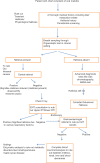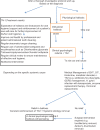Halitosis: Current concepts on etiology, diagnosis and management
- PMID: 27095913
- PMCID: PMC4813452
- DOI: 10.4103/1305-7456.178294
Halitosis: Current concepts on etiology, diagnosis and management
Abstract
Halitosis or oral malodor is an offensive odor originating from the oral cavity, leading to anxiety and psychosocial embarrassment. A patient with halitosis is most likely to contact primary care practitioner for the diagnosis and management. With proper diagnosis, identification of the etiology and timely referrals certain steps are taken to create a successful individualized therapeutic approach for each patient seeking assistance. It is significant to highlight the necessity of an interdisciplinary method for the treatment of halitosis to prevent misdiagnosis or unnecessary treatment. The literature on halitosis, especially with randomized clinical trials, is scarce and additional studies are required. This article succinctly focuses on the development of a systematic flow of events to come to the best management of the halitosis from the primary care practitioner's point of view.
Keywords: Diagnosis; etiology; halitosis; management.
Figures



References
-
- Bornstein MM, Kislig K, Hoti BB, Seemann R, Lussi A. Prevalence of halitosis in the population of the city of Bern, Switzerland: A study comparing self-reported and clinical data. Eur J Oral Sci. 2009;117:261–7. - PubMed
-
- Liu XN, Shinada K, Chen XC, Zhang BX, Yaegaki K, Kawaguchi Y. Oral malodor-related parameters in the Chinese general population. J Clin Periodontol. 2006;33:31–6. - PubMed
Publication types
LinkOut - more resources
Full Text Sources
Other Literature Sources

